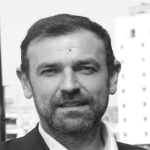Programme
-
Registration and networking
-
Opening remarks from the morning Chair
- Managing Contaminated Land within Planning
-
Local Council Perspective: Managing brownfield land as part of Local Development Planning
- Detailing the progress made, and next steps, in embedding changes into the planning and development process post Council reform
- Identifying the key challenges facing Planning & Environmental Health Officers in implementing these changes
- Outlining our approach to Local Development Planning and how contaminated land will be managed as part of this:
> to what extent can the objective of streamlining the planning consultation and applications process be achieved?
> detailing the type of information we need, and can make available, to facilitate this process
> clarifying the definition of “soundness” - Demonstrating effective collaboration with communities and stakeholders to achieve brownfield remediation and development
-
Update on the development of a National Planning Framework for the Republic of Ireland and the implications of this for brownfield development
- Update on the progress of Ireland 2040 – Our Plan and the key objectives and timescales of a National Planning Framework:
> key changes to the planning process and responsibilities of local councils in this
> detailing how environmental considerations will be integrated into land use planning
> examining the role of brownfield land in housing and development targets - Identifying the key challenges facing brownfield and contaminated land development in Ireland and how these could be overcome
- Update on the progress of Ireland 2040 – Our Plan and the key objectives and timescales of a National Planning Framework:
-
Questions and Answers
-
Morning refreshments and networking
- Contaminated Land & Groundwater Risk Assessment
-
Groundwater Risk Management: A Regulatory Update
- Clarifying any recent changes to groundwater risk assessment approaches, and the Regulator’s view on these
- Update on implementation of the UK Technical Framework for monitoring, assessing and controlling risks to groundwater and the regulation of the input of hazardous substances into groundwater
- Effectively using risk assessments to select appropriate remedial objectives and identify options for groundwater remediation
-
Practically implementing the use of bioaccessibility testing to determine risks to human health
- Update on the work undertaken by Queen’s University Belfast and the Bioaccessibility Research Group of Europe (BARGE) on assessing the risks to human health of soil contamination
- Exploring what factors affect contaminant bioaccessibility
- Determining what contaminants it is appropriate to use bioacessibility testing for
- How can generic assessment criteria be affected by incorporating site specific bioaccessibility information?
- To what extent is bioaccessibility testing accepted by Regulators as providing robust, defensible data for use in risk assessment?
- Quantifying the potential saving in remediation costs achieved through bioaccessibility testing
- Case Study: Practicalities of using bioaccessibility testing in contaminated land risk assessment
 Tatiana Cocerva
Early Stage Researcher, School of Natural and Built Environment, Queen’s University Belfast
Tatiana Cocerva
Early Stage Researcher, School of Natural and Built Environment, Queen’s University Belfast -
Ground Gas and VOCs: Practicalities of continuous monitoring for cost-effectively assessing the risks from ground gases and soil vapours
- Clarifying the requirements of BS8485 and other regulations for ground gas risk assessment on development sites
- Examining recent progress made in ground gas and vapour risk assessment both in the UK and internationally:
> assessing the effect of ground conditions on gas occurrence and management - Understanding where uncertainties and misconceptions occur in risk-assessing the most common contaminants and how these can be addressed:
> techniques for preventing overly-conservative or incorrect assessments
> understanding the difference between Gas Screening Values (GSV) and DQRA results
> progress made in the approach to testing TOCs
> examining the effect of measuring with or without flow - Clarifying the Regulator’s stance on new techniques for monitoring and risk-assessing ground gas
- Case Study: Evaluating the cost-benefits of complete continuous monitoring in maximising data collection and adding value to your ground gas and VOC risk assessments
-
Questions and Answers
-
Lunch and networking
-
Opening remarks from the afternoon Chair
Theresa KearneyPrincipal Scientific Officer, Northern Ireland Environment Agency (NIEA) -
Practical strategies for accessing, managing and presenting geological, geotechnical and environmental data for contaminated land development
- Introducing the ASK NI Network and the National Geoscience Data Centre (NGDC)
- Examining how improved data collection and sharing can result in lower site investigation and development costs
- Examples of using science and 3D models to better manage the sub-surface
-
Questions and Answers
- Contaminated Land Remediation Solutions
-
Asbestos in Soil: Best practice for applying industry guidance for asbestos in soil when it is found on-site
- Techniques for assessing the actual risk of asbestos when it is found on-site:
- best practice where traces or very low levels are found –justifying risk minimisation techniques
- what do you do if asbestos is not identified in the SI but then found on-site at remediation stage?
- Exploring the most suitable remediation techniques for asbestos fibres in soil
- Assessing the longer-term risks of leaving asbestos in-situ - how is this monitored over time?
- Examining the technical and legal implications of re-using waste classified as asbestos-contaminated:
> correctly classifying waste with very low levels of fibres present
> what exactly can be re-used on site and where?
> exploring alternative disposal options - Clarifying the Regulator’s view on leaving or re-using asbestos-containing materials
- Northern Ireland Case study: Practically using the CAR-SOIL guidance as a tool to manage asbestos on site
- Techniques for assessing the actual risk of asbestos when it is found on-site:
-
Waste Management & Re-Use of Materials: Effectively implementing good waste management practice on brownfield projects
- Examining current issues affecting the reuse of soils in Northern Ireland and the Republic of Ireland
- Reviewing existing waste licensing, permitting and management processes
- Examining the implications of recent EPA guidance in the RoI:
> application of the recently issued EPA guidance - Article 27
> discussion on proposed acceptance criteria for soil recovery sites - Presentation of a Case Study implementing good waste management practice
-
Questions and Answers
-
Afternoon refreshments and networking
-
Case Study: Effective Site Characterisation to Support Risk Assessment and Provide Proportionate Remediation Scope
This presentation will provide details of an ongoing remediation scheme at a former MOD site currently being redeveloped by the Department of Education as a multiple use educational campus. The site is being redeveloped to provide shared educational and sporting facilities for up to 4,000 students and represents Northern Ireland’s most significant educational infrastructure investment in recent years.
The presentation will include details of the following:
- Site investigation design and development of the Conceptual Site Model
- Design of the overarching remedial programme for inclusion within the Works Information for the procurement of the earthworks contract.
- Detailed technical review of the previously proposed remedial strategy, specifically with respect to a soil and groundwater hydrocarbon plume associated with a former Petrol, Oil, Lubricant (POL) Storage area.
- Supplementary site investigation design, including the collection of geological and hydrogeological data specific data relevant to the source area and along anticipated contaminant migratory pathways.
- Review of sampling techniques to achieve representative dissolved phase sample due to the potential presence of free phase.
- Low flow sampling to assess field chemistry and capacity to support contaminant degradation via natural attenuation, and use of Biotraps to assess microbial populations potentially applicable to the degradation of identified contaminants of concern.
- Detailed Hydrogeological Quantitative Risk Assessment to include parameters derived following site characterisation works.
- Refinement of Conceptual Site Model following DQRA and demonstration that contaminant concentrations in soil and groundwater did not present a potential risk to receptors and that site conditions were suitable to support the degradation of contaminants via natural attenuation; and
- Early stakeholder engagement and subsequent regulatory approval of a reduction in scope of remedial measures to comprise a programme of groundwater monitoring only (monitored natural attenuation) during construction, providing significant cost savings to the client.
-
Case Study: Passive drainage of deep clean groundwater as a sustainable means of reducing the spread of contamination
On an industrial brownfield site in Northern Ireland, DuPont installed a > 500 metre long horizontal well to drain deep groundwater upgradient of a contaminated area. This allows the clean groundwater to discharge with little or no treatment and to passively contain a contamination plume otherwise reaching a receptor. The particular hydraulic conditions on site allow the groundwater to well up freely with no pumping, which makes this a lasting sustainable solution.
-
Case Study: A Site investigation toolbox - Practically applying a variety of techniques from low tech to high tech
There are a variety of techniques to investigate contaminated land sites. However, more often than not a standard approach of drilling and monitoring well installation is adopted. The objective of this presentation is to explore other techniques (both high tech and low tech) that can be used in conjunction with this standard approach to greatly enhance the site characterisation process.
A case study of a former industrial site in Northern Ireland will be presented. The site investigation works were designed in a staged manner, with the results of each stage informing the scope of the next. This staged approach combined with the use of some lesser frequently used techniques allowed for better targeting of areas of potential concern and ultimately a more robust site characterisation and risk assessment.
The following low tech / high tech techniques will be explored:
- Electromagnetic survey
- Cone penetration test (CPT) including Membrane Interface Probe (MIP) coupled with a Hydraulic Profiling Tool (HPT)
- Photoionization Detector (PID) and pH survey of river bank sediments
- Installation of multi-level level monitoring wells
- Installation of passive flux meters (PFM) in groundwater monitoring wells
-
Questions and Answers
-
Closing remarks from the afternoon Chair
Theresa KearneyPrincipal Scientific Officer, Northern Ireland Environment Agency (NIEA)












